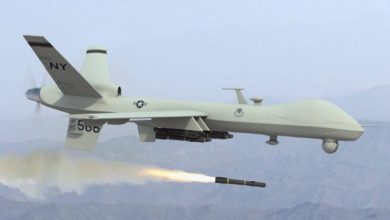Pentagon wants to make AI acceleration initiative a long-term fixture

TAMPA, Fla. — Three years after launching an effort to help combatant commands adopt artificial intelligence tools and concepts, the Pentagon is crafting a long-term vision for the program.
Deputy Secretary of Defense Kathleen Hicks announced the AI and Data Acceleration initiative in May 2021, just months after she took office. The goal was to use experimentation and exercises to help combatant commands apply digital tools to operational concepts like joint all-domain command and control and other key functions, including maintenance and logistics.
As part of the effort, the department embedded teams of data scientists, engineers and coders in each of the 11 combatant commands. Those experts were tasked with assessing each command’s digital readiness and providing feedback about where the Defense Department should invest to speed up their progress.
Radha Plumb, the Pentagon’s chief digital and AI officer, told C4ISRNET in a recent visit to U.S. Central Command headquarters in Tampa, Fla., the teams have been “wildly successful” — so much so that DoD leaders want to find the right model for making them a more permanent fixture.
“Having this capability in the COCOMs with connectivity back to the Pentagon headquarters and [the Office of the Secretary of Defense] is really valuable for a lot of reasons — highlighting data blockers, identifying where there are priority needs that we need to accelerate or invest in at a central level,” she said. “Now, we’re working through what is the long-term model.”
The initial funding for ADA ends this fiscal year, and the Pentagon plans to extend that through 2029 while it determines what a longer-term model might look like. The department requested $14 million for the program in its fiscal 2025 budget.
Plumb said she’s in the early phases of developing that plan. Part of her reason for traveling to CENTCOM was to meet with their ADA team, get a sense for how they’re organized within the command and hear about their successes and their needs.
That effort involves understanding how ADA teams fit within a command’s organizational construct, how big they are and how they’re being utilized. Those three areas, she said, will help the department determine how to manage and provide funding for the ADA hubs — whether through a centralized data team within CDAO, as it does today, or a different model.
Scaling tools
The team at CENTCOM is well integrated into the command, Plumb said. Since ADA began, they’ve completed their readiness assessment and have worked with the innovation office and operators to create multiple AI and data tools.
“They’re building tools they can experiment with and can make them operational,” she said. “And then if they want to mature and scale them, we at CDAO can get pathways for them.”
If the tools are adapted from commercial products, she said, that could mean finding resources to expand their use. For government-owned tools, CDAO may help provide the necessary authorizations to scale them more broadly.
Plumb’s office recently announced a new approach to scaling AI and analytics tools across the department that could make this process easier for the ADA teams. The Open Data and Applications Government-owned Interoperable Repositories construct, or Open DAGIR, aims to help DoD and industry bring together data platforms, development tools and applications.
The effort focuses on three types of capabilities: mature applications that it wants to make buy enterprise licenses for; experimental apps that address high-priority needs but require funding to accelerate their development; and applications built within a combatant command.
While Open DAGIR is meant to provide a pathway to make digital tools more widely available, Plumb said she’s heard from the ADA teams that data access is a significant roadblock.
One reason for that is DoD’s own struggle to automate and centralize data. Having the ADA teams identify where those bottlenecks are and why that data is needed helps Plumb and her office know where to focus their efforts and devote more resources.
“We have work to do,” she said. “The demand signal they’re creating, while it can be frustrating for them, gives us the signal and confidence we need to go and make those back end improvements.”
Courtney Albon is C4ISRNET’s space and emerging technology reporter. She has covered the U.S. military since 2012, with a focus on the Air Force and Space Force. She has reported on some of the Defense Department’s most significant acquisition, budget and policy challenges.







